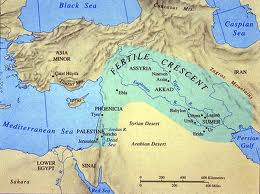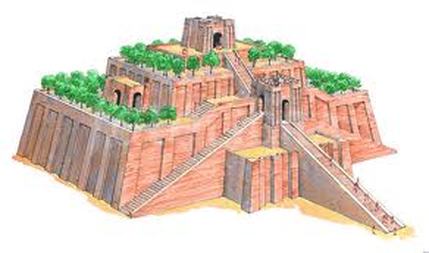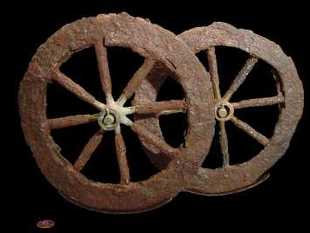AGMSPRITE ANALYSIS
Art and ArchitectureThe code was written on stone tablets and carved into a stele that was placed in public for all to see. Also, the civilization had simple bronze sculptures. Many people had houses, we know this because many of the laws involve property. What this suggested was that the land was able to be farmed on, and it was sustainable for a city to thrive. Babylonia had a lack of stone but had an abundance of clay, therefore many of the buildings had to be made using mud brick. When people started to settle in a place that was able to sustain life, they could farm, and they were near a fresh water source which meant that the animals could also thrive there. The art and architecture during this time period suggests that there was a large surplus of food that allowed for less people to farm creating job specialization. By having job specialization this meant people could focus on more than just producing enough food to sustain large numbers. Instead people put their efforts into becoming scribes, learning how to make new tools, working with new types of material that made for stronger weapons and more durable homes. People also began making large statues of their rulers and writing down laws on clay which shows that art was not just used for enjoyment, but rather a way for leaders to to be widely recognized and for a set of laws to be put into place.
|
GeographyThe Mesopotamian civilization, from which Hammurabi’s Code originated, was located between the Tigris and Euphrates Rivers. They provided a food source, water to drink, transportation, energy sources, water for the irrigation of crops, and enriched soil. Mesopotamia is also in the fertile crescent, which is ample for farming. The flooding of the Tigris and Euphrates also led to ideal soil by replenishing it with water and minerals. Cereal crops, such as wheat and barley, were plentiful due to the rich soil. This allowed for a surplus of food to be grown, which lead to job specializations, which lead to a fully developed civilization. Instead of traveling by camel, they had a new way to travel, and it allowed culture to spread because it lead to trading.
|
MilitaryThere was a strong military, especially considering new empires were continuously taking over Mesopotamia. Soldiers served the king and fought in wars dictated by the king. The king was in complete control of military actions, and they were always pushing to conquer more land. This kind of organization style required a strong and powerful king to maintain control of the empire, as well as to expand it. It also suggested that the food supply was large enough to sustain an army to serve the king. It also shows that there were other empires trying to conquer Mesopotamia, so they had to protect their borders. The military was brought up in every empire to protect it's borders, and this is still continued today, and it allowed for new war tactics and weapons to be made.
|
SocialThe main idea was to protect the weak from the strong; however, the weak had harsher punishments. Men had much more superiority when it came to conflicts with women. Women were punished for things such as infidelity, but men were not. The code of laws depended on class distinctions by having different guidelines and punishments for each with different levels of toughness. These laws also made it harder for class mobility. The peasants and farmers did not have many opportunities to rise up because they were being constantly put down by the law. Elders played a large role in determining capital offenses, showing that age played a large role in power. Among the upper class, they had different people that focused on specific things, such as mathematics, philosophy, and astronomy. This means that among the elite, there were also extremely educated people, and not only extremely rich people. Most importantly, a social hierarchy suggest a common theme found throughout history: as people gained more wealth and power they will do anything to hold onto this. That is why, especially at this time in history, it was very difficult to break social barriers and so the rich got richer as the poor got poorer.
|
PoliticalKing Hammurabi was the sixth king of Babylon. He developed the first recorded laws in history, and it governed human interaction. There were courts of elders, and people could “provide evidence”, which usually was just someone accusing someone else. This shows the beginnings of a court system, but it was not a fair one. To determine truth, for example, if people could survive the river, then they were deemed innocent. “An eye for an eye” was the type of political punishment system that was used under the code. This suggests brutal punishment, and the brutality was used as a deterrent to instill fear in people. This would prevent uprisings and rebellions. Hammurabi was one of the first people to use religion to influence people into following his rule. This suggested that the religion played a major part in the political side of running the empire. The ideas of religion used in government still exists, and some of the empires have used it in their laws. Might makes right has been used where whoever is in power then can do anything they please. The system of rule in the the Shang Dynasty was similar to the rule in Babylon because both rulers used religion as a way to gain power without it being questioned. This shows that in early civilizations when rulers gained power, they were willing to do anything to keep it even if that meant manipulating people into thinking they were blessed to rule.
|
ReligionGods facilitated rule and ways of society. The Gods gave the king the right to rule and authority to do it. When a ruler was failing, the people saw it as the Gods withdrawing their support. The king would lose his authority when the Gods stopped giving it. This shows that kings had to have the right to rule. Religion was often looked upon when physicians could not accurately figure out what was wrong with the person physically by mostly using exorcisms. Because priests were consulted after the physicians, it signifies that the priests were used as a last resort, and only when they were desperate. Temples, called Ziggurats, were also built as a place of worship to the Gods. This shows that the Gods were very important in society, and everyone looked to them for guidance and good fortune. Along the Nile, Tigris, and Euphrates, the Gods were responsible for the flooding of the rivers. This shows that natural occurrences were put in the hands of the Gods, and they were responsible for everything that happened in life. In the Shang Dynasty, rulers believed in The Mandate of Heaven which said that heaven would bless a just ruler but an unjust ruler would have its mandate withdrawn leading to that ruler being over thrown. The Mandate of Heaven, temples and statues all illustrate how religion was a prominent piece of early civilizations which suggests that people at this time were very concerned with pleasing their Gods so as to not have any environmental disasters or warfare.
|
IntellectualThey had a written language in cuneiform, which was what Hammurabi’s Code was written in. This caused more people to become literate in society because they needed to be able to read the laws. The development of surgical instruments indicates a wider knowledge base on the human body and medicine. Also, they were able to tell time accurately, which indicates strong knowledge in astronomy. The Epic of Gilgamesh was a prime example of their good knowledge on literature and poetry. They also had a strong knowledge of philosophy, and used them to portray ethics through poems and and folklore. Mathematics was also very important to intelligent members of the Babylonian society. They also developed the first calendar. All of these important intellectual advancements indicate a wider job specialization because once again people no longer had to worry about just producing food but rather people began becoming specialized in a specific area. Intellectual advancements also shows that these advancements were becoming necessary for a society as a whole to prosper and run smoothly which suggest a growing population with more and more people having to have their needs met.
|
TechnologicalThey developed tools to perform surgery, which shows specialization. They also had carts with wheels, pulled by oxen. They designed buttresses to support their buildings. They were the first civilization where astrolabes were found, which were used to predict the settings of planets and the lengths of the days. This shows a better understanding of the world and astronomy. All of these new tools show advancements in efficiency, better architecture, and intellect. The ideas of the planets continued to the Greek Empire, where they tried to figure out what is out there besides earth. Civilizations making large strides in the architecture of houses, the efficiency of transportation and medical advancements for surgery illustrates how a growing population required for technological advancements to be made so that a civilization could run smoothly.
|
Economical
There are records of economic transactions, such as temple taxes and payments. They had a money based economy with gold, silver, and sickle currency. The creation of currency illustrates the state's ability to control economics by manipulating the availability of money in circulation. People also paid in corn, which also suggests a bartering type economy. By creating a currency, a more intricate economy was able to develop. Goods, crops, and other items could now have specific prices. This made trading more standard and efficient. Farmers also sold surplus crops to merchants, which shows a stable system of trade and providing to other people.
Citations
None. "Ancient History Sourcebook: Code of Hammurabi, C. 1780 BCE." Internet History Sourcebooks. Fordham University, Mar. 1998. Web. 03 Oct. 2012. <http://www.fordham.edu/halsall/ancient/hamcode.asp>.
None. "Code of Hammurabi." Wikipedia. Wikimedia Foundation, 10 Feb. 2012. Web. 05 Oct. 2012. <http://en.wikipedia.org/wiki/Code_of_Hammurabi>.
None. "Mesopotamia - The British Museum." Mesopotamia - The British Museum. British Museum, n.d. Web. 04 Oct. 2012. <http://www.mesopotamia.co.uk/>.
Strayer, Robert W. Ways of the World: a Brief Global History with
Sources. Boston: Bedford/St Martin's, 2010. Print.
None. "Code of Hammurabi." Wikipedia. Wikimedia Foundation, 10 Feb. 2012. Web. 05 Oct. 2012. <http://en.wikipedia.org/wiki/Code_of_Hammurabi>.
None. "Mesopotamia - The British Museum." Mesopotamia - The British Museum. British Museum, n.d. Web. 04 Oct. 2012. <http://www.mesopotamia.co.uk/>.
Strayer, Robert W. Ways of the World: a Brief Global History with
Sources. Boston: Bedford/St Martin's, 2010. Print.









